AUGUST 15th, 1999
It was a hot August night, and I wandered downtown to a new teahouse called ‘Camellia Sinensis.’ Several people had mentioned this place in the Quartier Latin since it opened. So naturally, I was intrigued to meet some tea folk. I had been obsessively researching and selecting Darjeeling up in the Himalayas for a few years and selling modest quantities in the new internet universe. So, enjoying the summer evening, I thought to myself: ‘I might even sell them some tea!’
Well, it was quite a bohemian scene down there! The place was packed for a ‘special event’ and glowing with a positive, harmonious vibe. Plenty of interesting teas to drink and the thick, perfumed apple-tobacco smoke of narghile pipes hanging in the air.
Early evening pulsed with smooth electronic tunes from a couple of DJs. Then the place lit up with a wild, live gypsy band, and everybody danced. There was no doubt that this was the only place to be that night. Everyone in the room felt it.
But this wasn’t just a memorable night in some crazy student den. Behind the scenes, there had been some careful planning. Everyone had been served a drink, and the space was well organized and thought out despite being packed. The evening was being conducted casually and with exceptional discretion. That conductor was Hugo Américi, the founder, who later told me of his trip to Prague, where he had enjoyed this concept of a social meeting place with all the elements of a night out drinking good tea. To me, it sounded too good to be true! Hugo’s attention to detail was impeccable, even on a modest budget. His warm universal welcome was that of a natural host. In addition, he had joined forces with two very cool partners, François Marchand and Jasmin Desharnais. The trio shared this same essence of hospitality, enthusiasm, work ethic, team spirit, and fun.
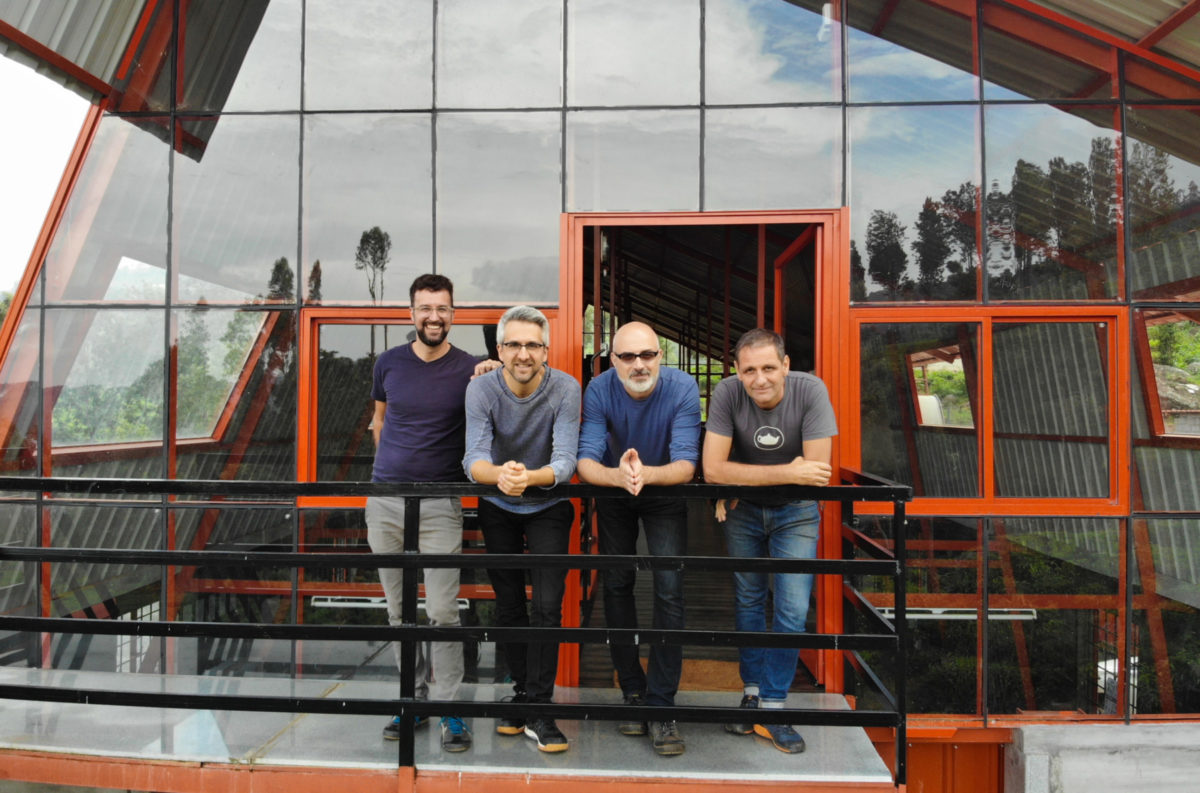
It was the beginning of a great friendship between the four of us. As things progressed, we became the close-knit team that we remain to this day. A business partnership fuelled by our shared love of tea and people. At every step, we schemed in detail, planned carefully, and then attacked the task with drive and enthusiasm. In time the focus moved from the parties to the plant. The hubbly-bubbly pipes disappeared, and gaiwans and gong fu sets were introduced.
Meanwhile, on the other side of the wall, through an adjoining door to the space next door, we opened our first tea store in September 2001. All four partners traveled to the tea lands annually, developing their regional tasting skills and their respective grower’s networks to source the teas for the catalog.
The initial spirit of community remained from those very first days, but the teahouse changed continually to follow an evolving intention behind the space. We were constantly improving the clients’ experience, showcasing the teas we were sourcing, and always retaining our trademark blend of warmth, hospitality, and belief that tea is the drink for all people. Visitors were treated to an environment that was arranged to enhance the tea-drinking moment. The style of service left traditional café culture behind. Instead, it resembled dining in a fancy restaurant, with careful timing, guidance on how to use the specialized teaware, and an explanation of the leaves that were infusing.
An enthusiastic staff of tea-lovers continued to join the ranks, increasing the hub of knowledge, research, and tasting.
As time went on, the décor became more stylish, the lighting was improved, and the ventilation and sound systems were upgraded. Finally, the WIFI was removed, and a ‘no-techno zone’ was encouraged, allowing clients to be more present and focused as they enjoyed the overall experience. This was quite a counter-culture move and was reported in the national press as WIFI was becoming a ubiquitous essential for the rest of the hospitality industry.
As opposed to the clients being elsewhere on the internet in their minds, we wanted them right here in the room, living the experience. Hugo introduced the concept of ‘VEM’ from the French ‘ventilation-éclairage-
We began developing a series of workshops and tastings for the public, which grew into our Tea Schools of Montreal and Quebec City. In more than 20 years of classes, thousands have taken our courses. As a result, Montreal and Quebec City have become very tea-savvy cities. Then in 2008, after many years of traveling to the tea lands, we turned all these first-hand experiences into the first French edition of our book (a book that went on to win a few awards and is now available in five languages).
Back in the teahouse, pairings and flights were being developed to expand the tea experience and light up the clients’ tastebuds and fascination. Our obsession with the teas led us to specialize increasingly in our company’s rapidly growing taster/buyer/importer/merchant elements. We opened a couple more stores, one in Quebec City and the other at Montreal’s Jean Talon Market. The ’sit-down’ teahouse became our experiential showroom.
By 2019, the teahouse had been through many chapters. To so many people, the space held years of memories of community, discovery, meeting, and coming of age. Often a blend of these. For others, it had become a sanctuary of peaceful moments and contemplation. It had been the venue of first dates and proposals. Thesis and novels had been conceived or finished there. But, underlying all this, it was an efficient catalyst between tea culture and thousands of local and international tea lovers.
But business is not a static state; it is an adventure of decisions and crisis management. Innovation keeps it fresh and adapts to the changing environment.
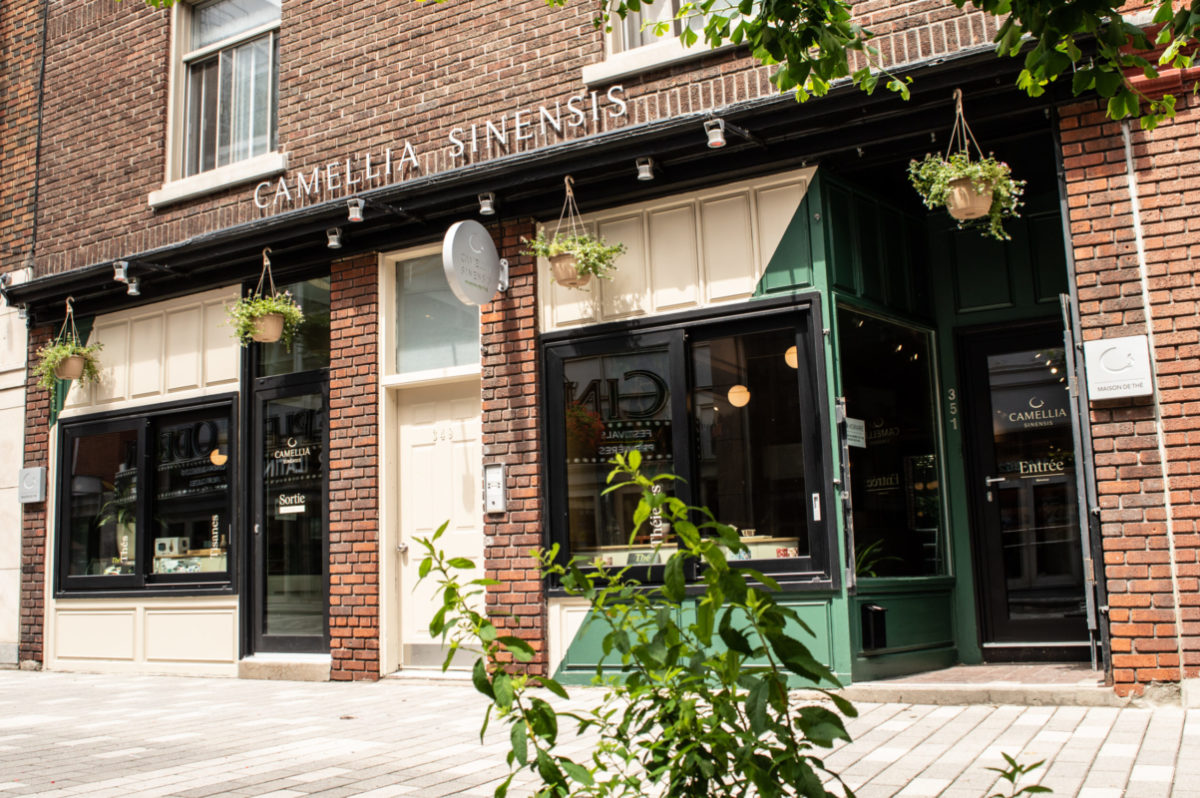
In recent years the teahouse had struggled to make ends meet. Despite continued popularity and regular lineups of clients eager to visit, the changing times meant that those precious moments of magic we created with such love and care barely paid the bills. It required enormous micro-management and many staff to offer such a complete experience to so many people. Moreover, all this work did not balance with the modest average transaction of the clients. Tea service for two, lasting a couple of hours, was an inspiring way to spend the afternoon but, at the end of the week, was no longer a winning proposition financially.
Next door in the store, the dense catalog of teas that sat on the counter, updated once a week, had become the company’s beating heart. It embodied our quest for great leaf and the direct line of respect, source to the client, that we had worked so hard to install. Our wholesale and distribution of premium leaf to other tea companies and our retail and web sales were now very much our trade. It became apparent that the restaurant-style activity of running the Montreal teahouse was very different from all our other operations. Our precious ‘salon de thé’ had become separate from the principal activities, a small, leaky boat pulled along in the wake of a growing ship. Even so, we held on and cherished the place through a blend of personal nostalgia and responsibility to the community.
When the pandemic hit in March 2019, we were forced to close the doors to follow protocol. The stores remained open with their grocery store status. Many teahouse clients switched to buying teas and setting up to infuse at home. Finally, we realized that the time had come. Absorbing the teahouse staff into our warehouse team, we announced the official closure of the teahouse in March 2021. To many, it seemed drastic, and, naturally, for us, it was a very emotional decision.
We held a yard sale of all the furniture and accessories to empty the space. Our wonderful and loyal clients turned up in droves; despite the end of winter chill, they lined up around the block! It is pleasing to know that their tea spaces at home contain a souvenir of those cherished years. The teahouse was now an empty room.
Closing the doors was the end of a beautiful chapter; we felt it, and the staff felt it too. We still explain the change to confused and disappointed clients, looking for the teahouse daily!
However, this was also an opportunity to create a finely-tuned, more relevant tea space while retaining all the essential elements of discovery and tea culture that the teahouse had promoted. And as we all know, you need to crack some eggs to make an omelet.
In 2018, Jasmin and I were in Las Vegas for the World Tea Expo, three years before the teahouse closed. Camellia Sinensis won the Best Tea Shop prize in the World Tea Awards; we were absolutely delighted. We had recently won a few awards at the WTE for our blog, book, website, etc., but this was the one we coveted. The award was international recognition we could bring back to our amazing staff to show them how great they were.
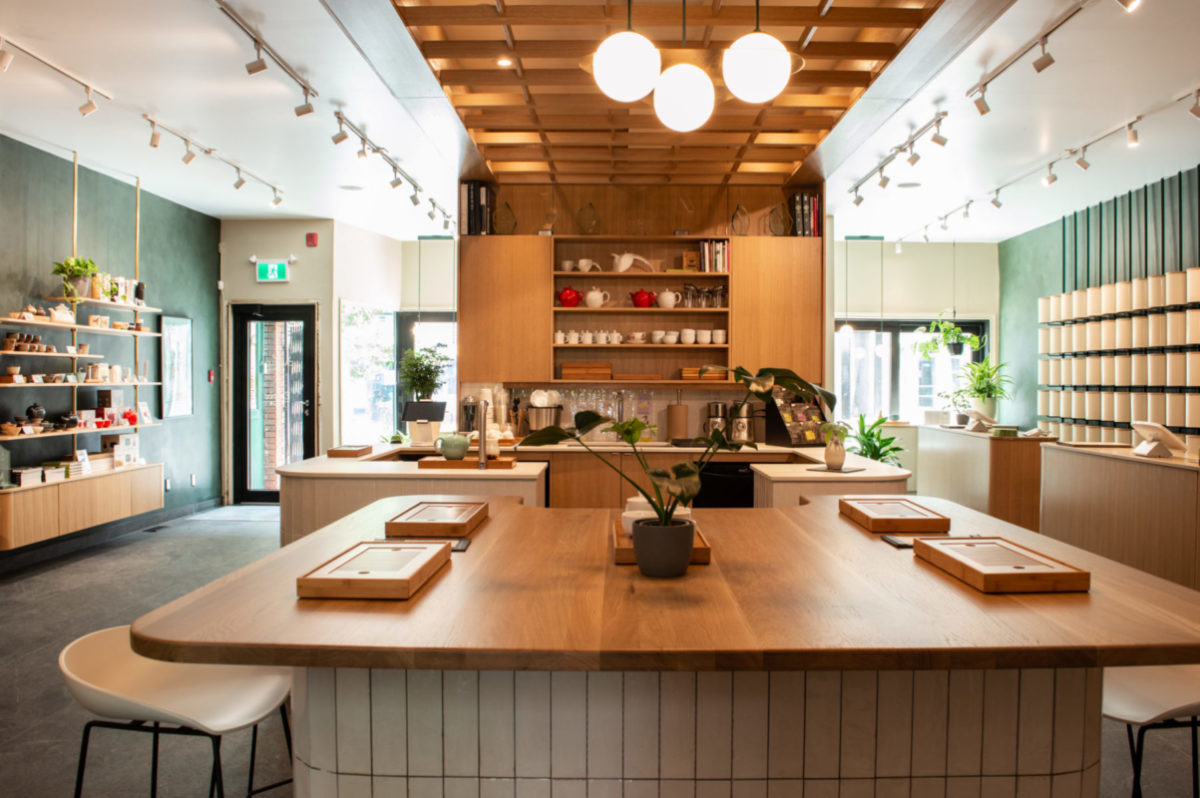
Late that night, after a tea-drinking session with friends, we chatted about our ‘prize-winning’ store and began imagining our perfect future tea store. Jasmin gazed off at the Vegas skyline and said, ‘I would knock the separating wall down and make the teahouse space part of one big store.’ The dream of a flagship tea store to represent our company was born, and Jasmin’s idea of joining the two spaces into one big room would remain in our minds.
In 2021, the teahouse now closed, and the design sessions began immediately. For about six months, the four of us spent a few hours each week discussing and refining our ideas for the new space, from concept to materials to logistics. We hoped to distill all the things we loved about the teahouse and the store into a memorable, experiential visit for the clients. We began by removing all the aspects and details we had found unnecessary or outdated from over 25 years in the business. The staff was involved right from the beginning in brainstorming sessions. Many great ideas were incorporated from these early team discussions and presentations.
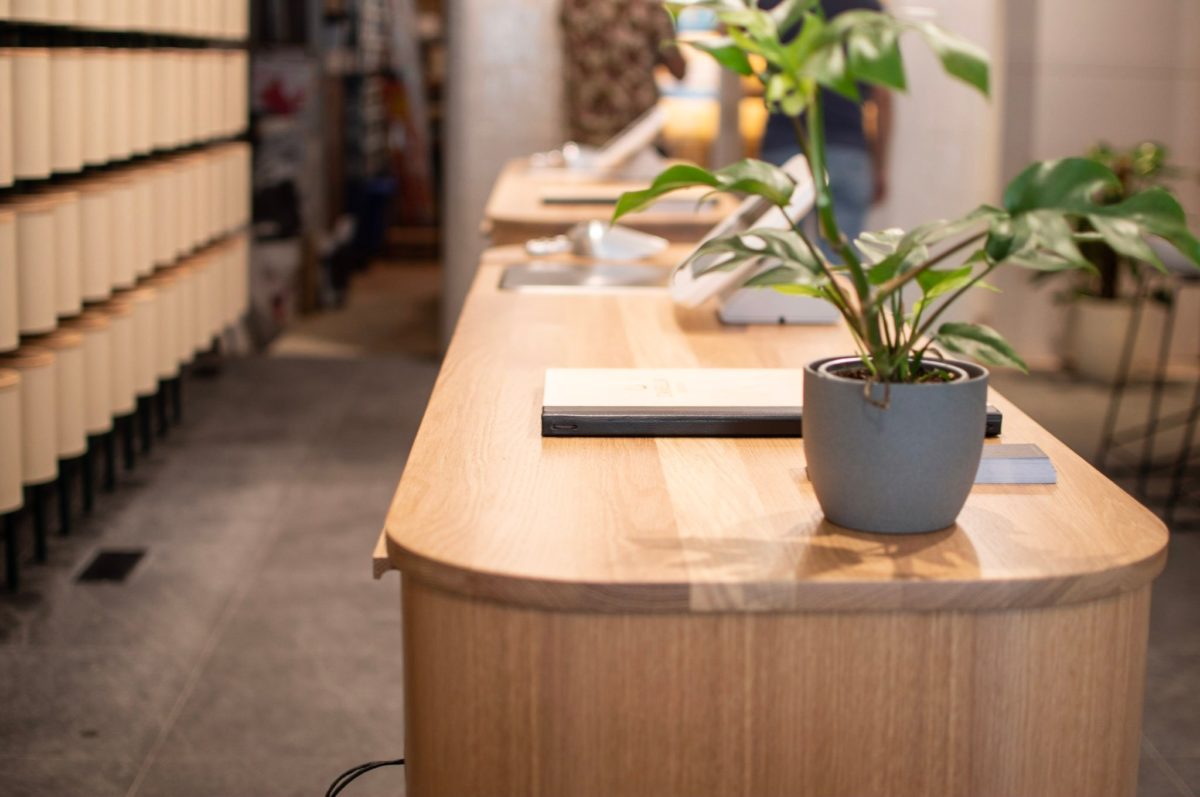
We first considered the fundamental essence of the place. The specialty product scene requires a space that emits that specialty message to the public. Gravitas and establishment make for a common choice. The old-fashioned tea store with seemingly decades of the institution is a popular style in our industry. Many of my favorite tea stores have this vibe. Our little store at Jean-Talon Market has a bit of this feel and has been compared to the magic wand store in the movie Harry Potter! But we felt conscious that this direction didn’t represent our approach to tea. These bastions of tradition contain the suggestion of a constant, finite picture.
Our producers are continually experimenting to improve their legendary teas or find new flavor experiences with a different tweak in the process or an unusual cultivar. We work closely with these artisans, often making collaborative ‘project’ teas and now producing and developing our own teas at our little factory in the Nilgiri Hills at the Tea Studio.
Market trends for different teas shift all the time; even in China, the Mothership, one year, the producers are all experimenting with black tea, then the Bai Ye cultivar is doing the rounds. Here in North America, our market focus regularly shifts from one growing region to another or style to another. On top of that, we are all learning constantly, harvest by harvest, year by year. This everchanging flux is a stream of new information and new experience. Where the traditional dynamic of ‘master and student’ suggests a point of arrival, we find our relationship with tea compares more to an exciting journey. We may be veteran tasters, buyers, etc., but above all, we are simply enthusiasts.
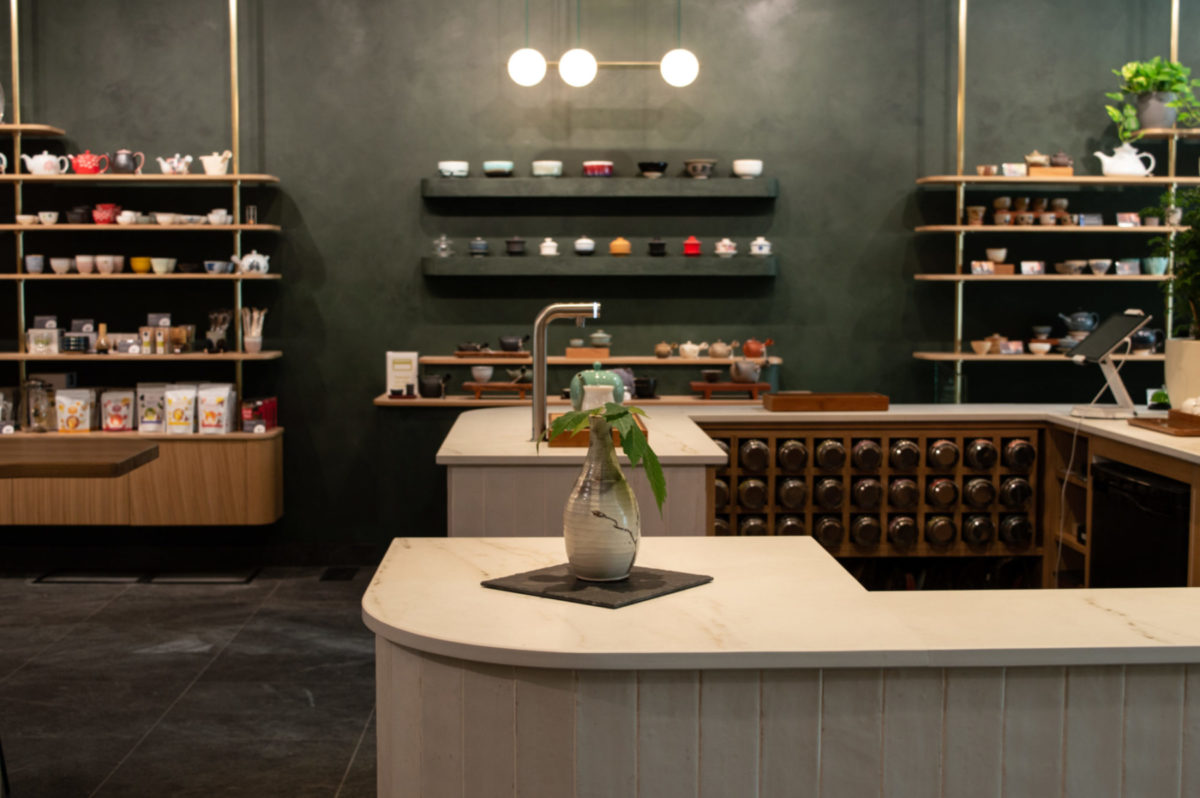
So, this dynamism was to be incorporated into space while retaining the golden elements of that shopping experience: a vast catalog of fresh, directly sourced, world-class products and the enthusiastic and knowledgeable staff to tell you all about it. Removing those markers of age-old tradition also reduces the imposing ‘imposter’ feeling for a novice’s first, inquisitive visit. It allows all demographics to relate to the space. With our strong belief that tea is for all people, there is no room for snobbery or the propagation of an ‘us and them situation. The more we can empower our clients to take the reins, exploring and infusing with confidence, the better for everyone involved. Moving forward, we are guiding our community to a fascinating place, enticing all generations with our combination of hospitality, generosity, and classy catalog. ‘You like tea? Get on the bus! This place is rolling.’
We also needed a space to continue the educational elements of workshops, tastings, and Tea Club. These activities would be an essential element of this new room. From the spirit of the teahouse, we incorporated that moment of discovery when drinking tea becomes tasting tea — that most direct visceral connection to this fascinating world.
Our stores have always offered the option to smell the tea, and clients really appreciate the opportunity to select their tea sensorially. We are done with the impracticalities of the sit-down visit, but we wanted to capture that special tasting moment and offer the possibility to take it further. Tasting in a tea store is standard in China and brings the client closer to the product. We had also seen this concept at the Harney Fine Tea store in Soho, NYC, a few years ago and never forgotten it. So, we added the tasting bar concept to the mix. This would allow clients to spend a few minutes with two teas served in a professional tasting kit. Either from a preselected list of suggestions, two green teas, two Wulong teas, etc., or, for a small price, the opportunity to taste any tea from the catalog. The whole space would be devoted to the pleasure, discovery, and the enjoyment of tea.
Next came the selection of materials to create the feeling and ambiance we wanted to offer.
Francois, the arty partner that designs all our packaging, graphics, and website visuals, took the lead in collecting images of design elements and materials that appealed to us. We gradually put together the mood boards we needed to accompany the basic concepts we had in mind. We were then ready to start talking to a few different designers for the plans. We chose a local group called Machine to incorporate architecture, interior design, industrial design, and creation, right down to the installation — a young and very dynamic team. Over a few months, they absorbed our ideas, suggested, added, and adapted as the plans evolved. They were behind the unique ‘floating tea-wall’ crafty design. As we got to designing the ideal tea bar and service counter, we again involved the staff in incorporating ultimate practicalities and minute details into every piece of furniture. The overall feeling was bright, light, open, and pure, modern yet welcoming.
Instead of hiring a general contractor for the work, we took on coordinating the project ourselves. We may have saved some money and assured our personal touch, but it certainly consumed our lives for months! We spent our days in work clothes and steel toes, filling the gaps, carrying materials, making urgent phone calls, and cleaning up at the end of long days. Finally, the space began to take shape, and the tough decision to close the teahouse, the months of planning, and the ordeal of coordination and physical work all made sense. The dust settled, and our beautiful new flagship store, the vessel of our message, emerged and was open for business.
Camellia Sinensis | Location
Montreal | Latin Quarter
351 Emery St.
Montreal, QC H2X 1J2
Canada
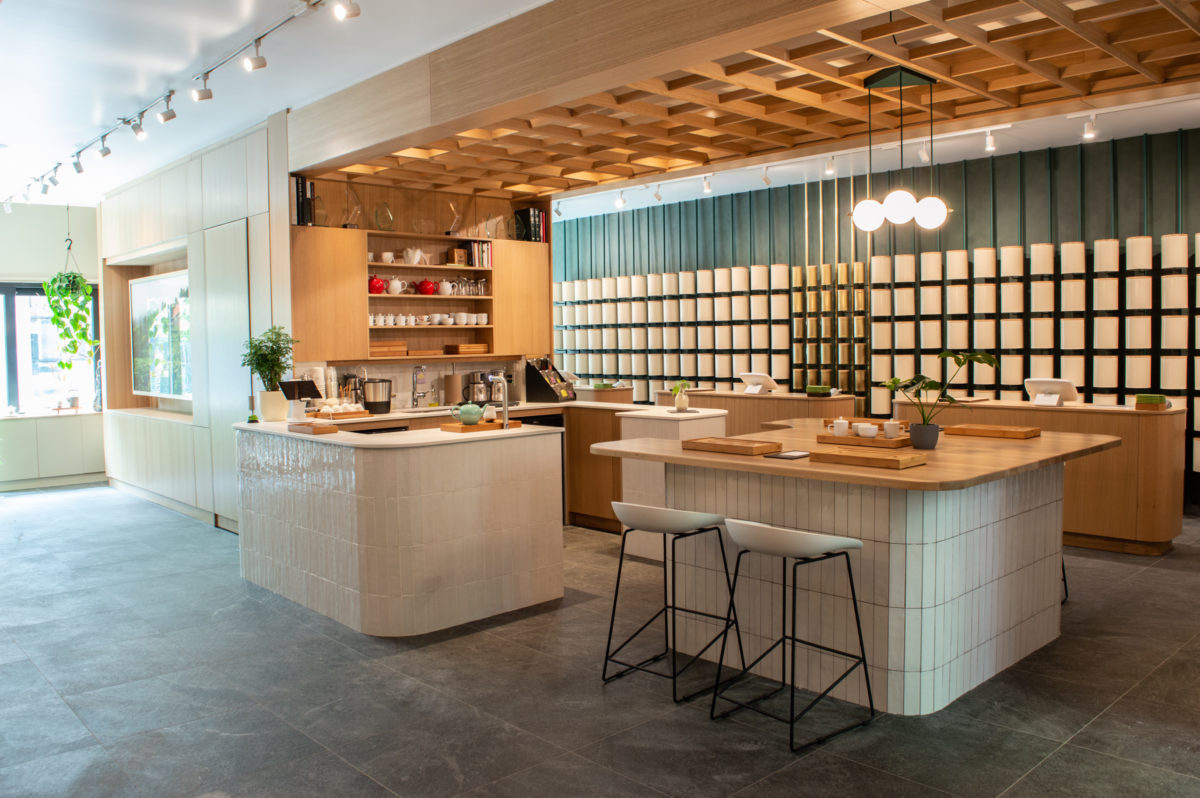
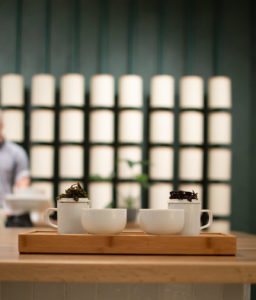
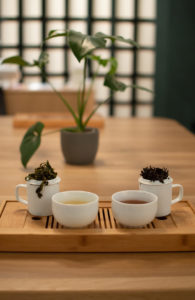
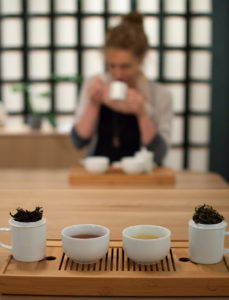
Camellia Sinensis is Royalty in our tea world and Kevin is a Prince!
What a wonderful & fascinating journey.
Thank you for sharing.
Looking forward to being there, hopefully in late spring ’23
The specialty tea market in Canada is thankful for the commitment that the Montreal 4 bring to the fore. We will raise our Wall* in thanks to their vision and leadership.
For people who still do not ‘get it’ that specialty tea is about more than just the tea leaves – read Kevin’s sublime explanation of this often inexplicable far-reaching concept.
The photos are stunning. I absolutely love the revisions you guys have made.